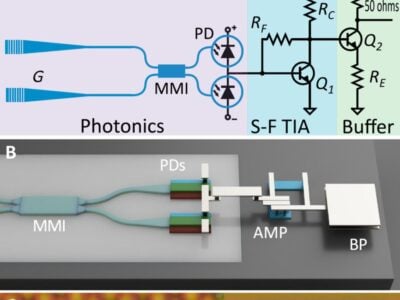
European project brings large quantum computer within reach
Ten international partners from academia and industry will collaborate in a research endeavour to build a high-performance quantum computer, available to a broad community of users. The project, OpenSuperQ, coordinated by Saarland University in Germany, is part of the EU’s ambitious €1 billion Flagship initiative on Quantum Technology. Chalmers University of Technology, Sweden, will contribute with in-depth knowledge of the primary building blocks of quantum computers.
According to the belief of the project initiators, the world is currently taking the first steps into the second quantum revolution where quantum technologies will play a decisive part in advanced technology. In the last few years, quantum computing has been elevated from a basic research concept towards a viable cloud offering which will be affecting people’s everyday lives in multiple ways.
In order to catalyse the transfer of quantum computing research from the lab to the market, the collaborative project OpenSuperQ (Open Superconducting Quantum Computer) aims at developing a large quantum computing system – with “large” meaning 100 Qbits. Today, the largest known quantum computer is Google’s “Bristlecone” system with 72 Qbits. The OpenSuperQ will be practically usable and available to the scientific community according to an open model.. The open approach allows the system to serve a large community of early adopters and educate the next generation of quantum scientists, developers, and users.
The expertise of Chalmers University of Technology lies mainly in the smallest building blocks of a quantum computer, the superconducting qubits. Over the years, Chalmers has made many contributions to developing the field, coordinated several EU projects through Professor Göran Wendin, and is leading the Wallenberg Centre for Quantum Technology, the major Swedish effort of engineering a quantum computer.
“We are fortunate to have gathered a team of the most renowned players in the field bringing together science, engineering and application development at the highest level,” says Professor Frank Wilhelm-Mauch from the Physics Department of Saarland University who coordinates the project.
In order to fuel the translation of technologies into applications, the OpenSuperQ system will be located at the supercomputer centre at Forschungszentrum Jülich in Germany. The hardware will be based on superconducting integrated circuits and contain the necessary technological infrastructure, including a control system and cryogenics. The software stack will be integrated, from user access all the way to low-level control.
While designed as an all-purpose quantum computer, the project particularly targets applications for quantum simulation in chemistry and materials science as well as for optimisation and machine learning. The computer will be among the leading platforms in the world and the first of its kind developed in Europe.
To maximise the project’s impact in the field, the partners strive to establish close links with European and international research and industry players, both as technology partners and as users. The involvement of highly recognised stakeholders in the advisory board, the basic science group and a user board will further contribute to the achievement of this aim.
OpenSuperQ receives funding from the current EU Research Framework Programme Horizon 2020 and will run for an initial period of three years.
For more information, please visit opensuperq.eu
Related articles:
New Google framework lets devs experiment with quantum algorithms
Google quantum processor aims for ‘supremacy’
 If you enjoyed this article, you will like the following ones: don't miss them by subscribing to :
eeNews on Google News
If you enjoyed this article, you will like the following ones: don't miss them by subscribing to :
eeNews on Google News




